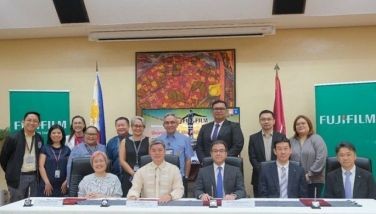A dream for Pasig River


There has been much hand-wringing and hair pulling about it, but it seems inevitable that the Pasig River, which brought life to what has become Metro Manila, is on its last breath.
Advocates opposed a planned expressway that will run alongside the river cry preservation and rehabilitation, but their calls seem as shallow as many parts of the river that had been inundated by silt and pollution.
Some would say such calls are empty and good only for press releases and triggering others to oppose the project but not grounded in reality.
And who can blame the many silent cynics - esplanades and beautification efforts be damned - when the reasons that have caused its seemingly inevitable demise have quintupled?
The river’s natural protection of lush greens has long been wiped out, having been decimated to give way to factories and illegal settlers encroaching on its easements.
The sparse communities along its banks have been replaced by housing, both formal and informal, industrial centers and commercial areas, whose solid and liquid wastes also eventually end up in the river.
In a way, former president Duterte had a point when he said in 2017: “You can no longer rehabilitate the Pasig River. To do that, you have to break up Manila and there is no more time and space for all of you who want to do something about it. You have to disperse the crowd.”
The Pasig River was declared dead in the 90s. By then, all the warning signs from some three decades back had been ignored.
In 1970, Manila’s metro area population was just close to 3.5 million. In 1990, it had more than doubled to nearly eight million.
Today, the metropolis hosts some 15 million residents. They live in areas adjacent to the river which has now become a giant, meandering sewage system.
Uncontrolled population growth, negligence and industrial development brought about its rapid decline in the second half of the 20th century.
Still, while almost everyone had given up on it, several determined and action-oriented non-government organizations (NGOs) believed, and continue to do so, that it’s not yet too late.
The Piso Para sa Pasig project, undertaken by the Clean and Green Foundation, met significant success during its time, especially in rallying the public to the cause.
Nearly 30 years since undertaking what was then the most-ambitious effort to revive the Pasig River, the said NGO was awarded the 2019 Asian River Prize by the International River Foundation for being able to return some life to Pasig, including eight fish species, 39 species of birds and 118 species of trees and other vegetation.
Dreams and ambitions did not stop there, however.
At about the same time, the government established the Pasig River Rehabilitation Commission. But the agency that supervised the river’s rehabilitation was abolished in 2019.
Then, in 2020, San Miguel Corp. (SMC) made a pitch to the government. It offered to undertake the river’s rehabilitation by dredging and clearing the waterways and tributaries of silt and solid waste at no cost to the government. The Department of Environment and Natural Resources, other national government agencies and Metro Manila mayors, were all in favor of what has become perhaps the largest ever effort to clean up the Pasig River, which is only part of SMC’s much, much larger and more ambitious effort to rid major rivers in Luzon of wastes.
Cost to SMC of just the Pasig River cleanup, undertaken for about two years and covering 27 kilometers: P2 billion, resulting in close to 1.5 million metric tons of silt and wastes removed, following a thorough bathymetric study of where all the shallow, problem areas are.
On top of this, overall, SMC’s river cleanup efforts have thus far removed nearly 6.5 million tons of silt, waste and trash from over 110 kilometers of rivers, from the Tullahan, Pasig, San Juan and Bulacan rivers.
In terms of impact, televised interviews with local and community leaders along the Pasig River are very telling. Many express hope that the Pasig River would regain not just its allure but its full life. They dream of the day when they can fish again on its banks for food, be able to generate livelihood from its waters, or even swim in the river. Like our forefathers did.
This shows us three things. In our quest to do what is right for Pasig River and the Filipino people for the long term, there are those that merely use the cause to advance their interests; those that go beyond just talk and actually take action, and, in the private sector, at least one champion that puts its money where its mouth is and spends billions to actually do something, without even much fanfare.
Progress can be in harmony with nature. It’s up to us to prove that economy and progress can flow down the Pasig River without disrupting nature.
For comments, e-mail at mareyes@philstarmedia.com.
- Latest
- Trending
































